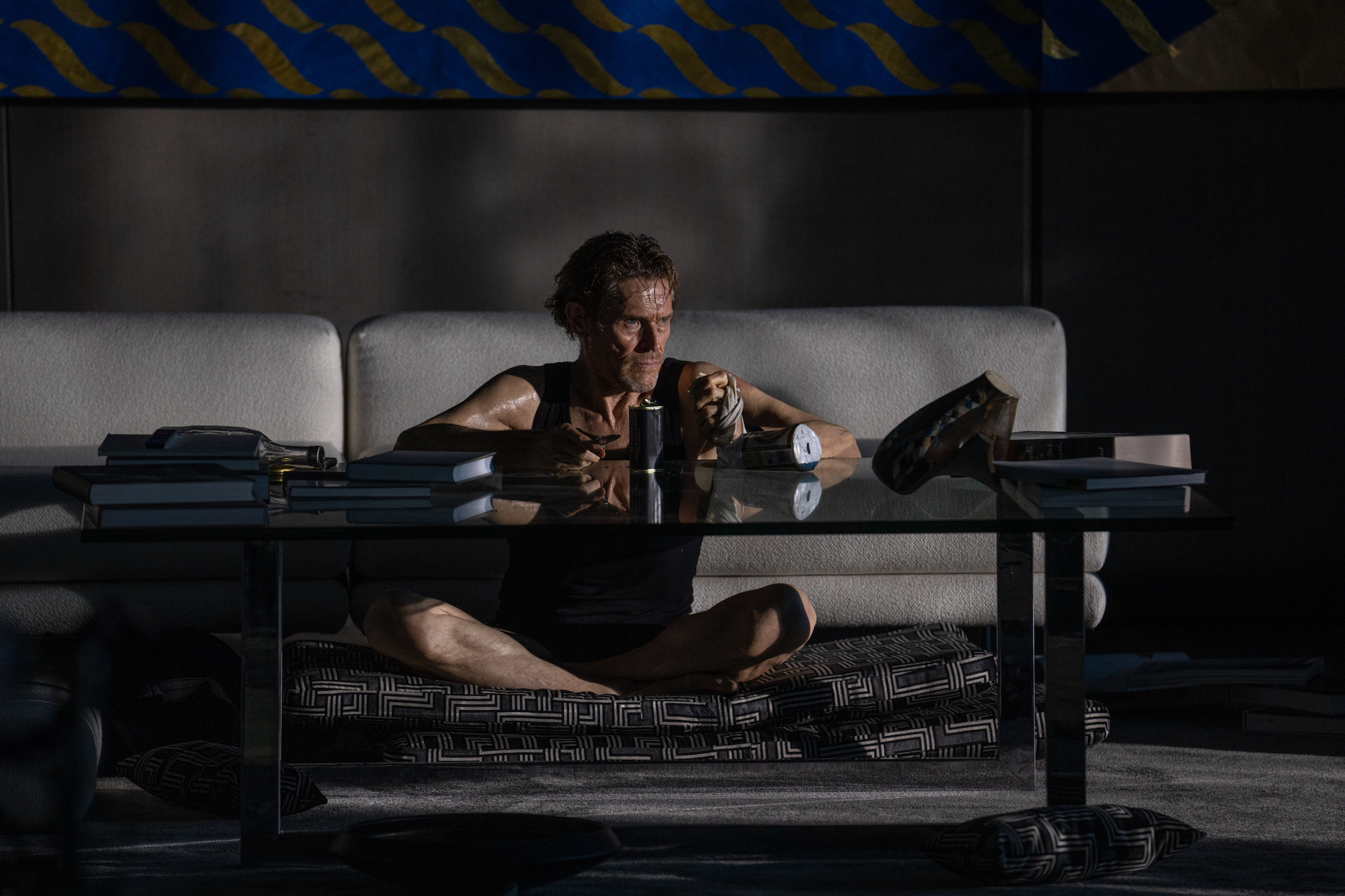
It’s a wonder we didn’t all go mad. How did we even survive the early days of the pandemic, a seemingly interminable epoch during which many of us spent long hours holed up in our sad little towers, captives in sweatpants gazing longingly at the outside world? Vasilis Katsoupis’ intriguingly odd little psychological thriller Inside isn’t a pandemic parable per se, but it’s likely to resurrect some jittery memories of those days even so. A high-end art thief played by Willem Dafoe botches a burglary and finds himself trapped alone in an art-filled luxury penthouse, for hours that stretch into days. Will he get out, and if so, how? Meanwhile, what is all that time spent alone—not to mention all that art, which includes an elegantly haunting Egon Schiele self-portrait—doing to his brain?
There’s a lot going on in this captivating, buzzingly cerebral picture. Written by Ben Hopkins, from an idea by Katsoupis, Inside is partly a black comedy about enforced solitude. But it’s also about the ways art can sustain us even as it may incite feelings we’d rather not deal with, and it tangles with the messy process of creating art in the first place: for some, that creation is a compulsion, almost a prison break of the mind, a way to make sense of the entropy of the human psyche.
Inside is essentially a one-man extravaganza for Dafoe, and he shoulders its complexities ably, with zero vanity. At the film’s beginning, Dafoe’s Nemo is a confident heist-master, disabling alarm systems with ease and freeing priceless pictures from the wall with a magician’s deftness. The penthouse’s zillionaire owner is in Kazakhstan for an unknown length of time, and he’s set up complex technology to babysit his possessions while he’s gone. None of this circuitry intimidates Nemo; he’s studied it like a master.

Until it all goes haywire, and Nemo finds himself locked inside a luxury pad turned sinister. The temperature controls zig and zag with a mind of their own, leaving him sweating one minute and shivering the next. There’s no running water. To amuse himself, Nemo contemplates the paintings and sculptures around him. (They include works from artists like Francesco Clemente, some specially commissioned for the film.) Before long, his response to his confinement becomes a work of art itself, one whose creation drives him into a semiferal state. Dafoe is alive to every shift: When he strips down, his bony shoulders have a temple-like austerity. When he sweats, every pore seems alert. Some of these descent-into-madness transitions may not be easy to watch, but they’re never, ever boring.
Inside is magnetic precisely because it doesn’t hand over easy answers. It can feel arty and arch, a bit taken with its own somber cleverness. And then Katsoupis pulls off a hilarious little curlicue, like an interlude in which Nemo performs a cooking-show routine for an audience of no one. His meal of choice is pasta selected from the apartment’s ever waning pantry staples, soaked overnight in cold water. He goes through the preparation steps, all two of them, with the affability of Ina Garten.
Read More: The 49 Most Anticipated Movies of 2023
Even that little bit of pasta water is a precious commodity: it comes from a timed sprinkler that’s been set up to hydrate one of the apartment’s key features, a small, lush indoor forest. Nemo waits and waits to hear the hiss of that sprinkler, and when it finally comes, he flops down in this mini Eden and cackles with joy amid the glittering spray. It’s a moment of heaven in a peculiar kind of hell. Leave it to Dafoe to make the most of every drop.
More Must-Reads from TIME
- How Donald Trump Won
- The Best Inventions of 2024
- Why Sleep Is the Key to Living Longer
- Robert Zemeckis Just Wants to Move You
- How to Break 8 Toxic Communication Habits
- Nicola Coughlan Bet on Herself—And Won
- Why Vinegar Is So Good for You
- Meet TIME's Newest Class of Next Generation Leaders
Contact us at letters@time.com